 citizens
citizens
The Front and the Back End of Town
[EN] An Attempt at Exhausting the Body of a Fifty-Year-Old Female Citizen. by Fabienne Queméneur
11/06/2024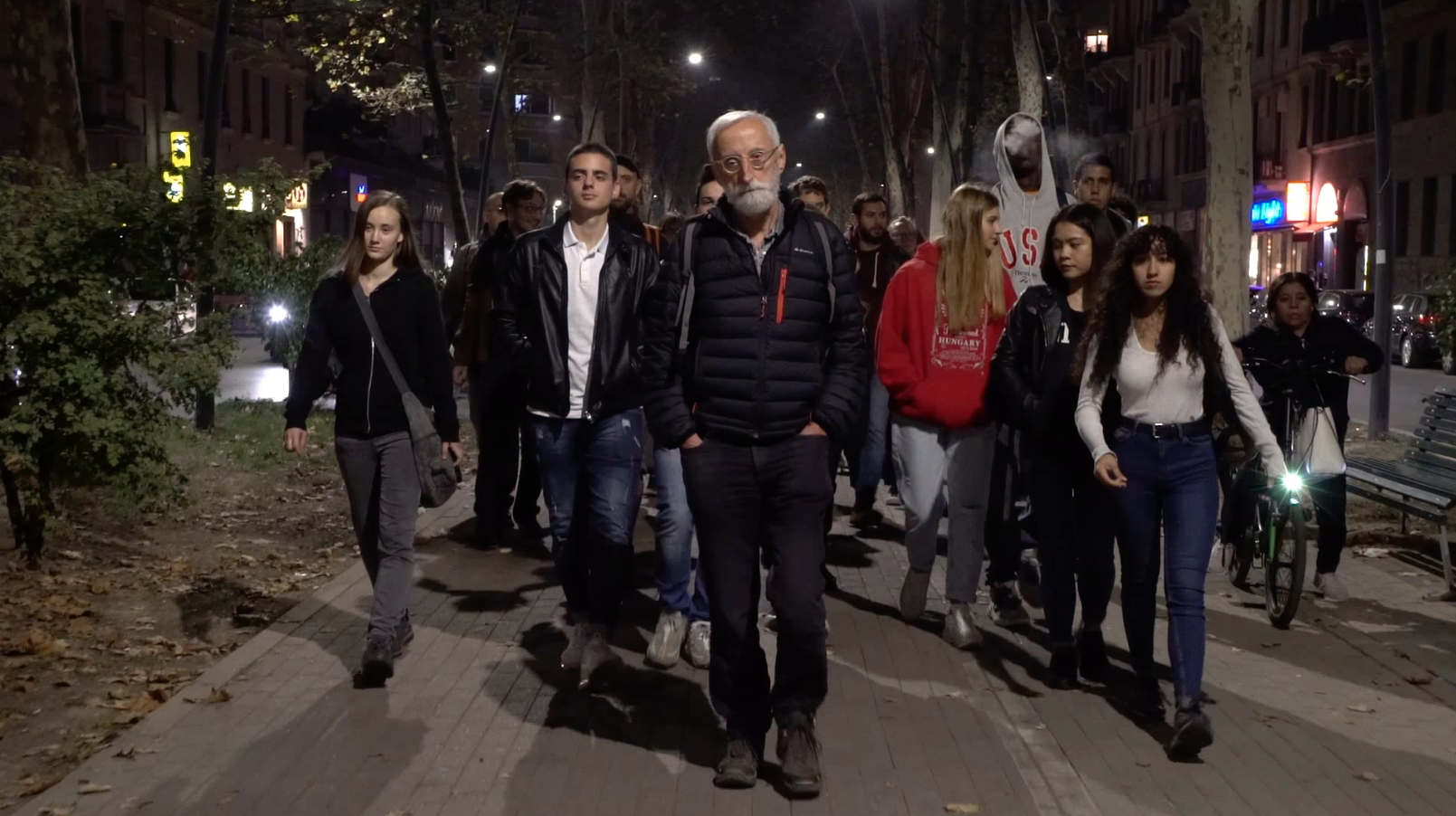
Story of a Milanese exploration orchestrated by the artist DOM-
By Fabienne Quéméneur, co-pilot of the ANPU, the Agence Nationale de Psychanalyse Urbaine (National Agency for Urban Psychoanalysis) and cultivator of the Au Bout du Plongeoir association, an art and meeting place, with its ethos of “l’Art Bâtisseur” (Building Art)
In his 1974 book “Tentative d’épuisement d’un lieu parisien”, (An Attempt at Exhausting a Place in Paris) Georges Perec spent three consecutive days in the Place Saint-Sulpice in Paris, experimenting with the ‘radical’ observation of a place, noting absolutely everything he saw, from the ordinary to the extraordinary, with no distinctions made, in an attempt to grasp its substance and capture its mystery. Today, many artists, architects, town planners, academics and sociologists still use this as a reference “protocol” work to try and capture the soul of a place in all its temporalities, and examine every pore of this urban body.
The experience I’m about to tell you about is also about exhaustion, but it’s the exhaustion of a body this time: my own, during one of my trips to Italy, to Milan, as part of the INSITU network’s ‘(Un)common spaces’ programme. I played the role of an ‘enlightened’ citizen, a third person, intermediating between cultural operators and artists, a bridge-builder and weaver of connections between the arts and architecture, landscape, urban planning, design, psychology, and more. |  |
It was the last day of the workshop, and I was tired but excited at the idea of discovering the performance by Leonardo Delogu, an Italian artist with whom I’d talked briefly, discussing his work which deals with lacunas, wasteland and interstices. The way the performance was presented was also very enigmatic... There was no indication of what it was going to be about or how long it was going to last. It was clear, however, that we’d probably need to walk as we’d been advised to wear good shoes, though I assumed it would only be a short distance. | |
As my day was free that day, I decided to walk around Milan before the performance. My hotel was a bit out of the way, but I decided to head for Piazza del Duomo, the meeting point in the centre of the city, on foot. I passed a number of very inviting little streets with charming architecture, but I didn’t linger there, thinking that I’d find a nice little bar in the centre to relax in later. But the closer I got, the more I saw the Roman Empire unfolding before my very eyes in this city of fashion and design, along with all the social classes that go hand in hand with the latter. The further I walked, the more imposing, splendid and magisterial the buildings became – definitely not what I was looking for when it came to my coffee break. | |
It was time to get back so I didn’t miss the start of the performance. So I just walked for three hours without stopping and I joined a group of around twenty people at the Museum of Contemporary Art in the Piazza Duomo. Our group was given helmets and instructions. We were going to walk together, in silence, towards an unknown destination, and we’d start by visiting the exhibition. | |
Our attention was particularly drawn to the top floor of the exhibition, a dark, very visual universe populated by holes, rough surfaces and scars. It was beautiful, and I thought back to my discussions with Leonardo. | |
Before leaving, the voice in our headset encouraged us to look at the main square and conjured up the image of a little girl in the middle of a flock of pigeons. Just as the words were uttered, that’s exactly what I saw unfold before my very eyes... How was such synchronicity possible? I looked at my neighbours to see if they were as enthralled as I was. They didn’t have any particular reactions on their faces but I personally took this magic moment as a promise that this afternoon was going to be something out of the ordinary. | |
A white-haired man in front of a work of art with a black rucksack attracted my attention. I soon realised that we were going to be following this man, but I didn’t yet know that it was going to be for four hours – just after I’d already been walking for three hours – or that I was about to undergo an extreme and transformatory experience exploring not only the limits of Milan but also of my own body! | |
Just now, we were a small group making our way from the centre of Milan, at a distance of about ten yards behind a silent walking figure guiding us on this silent journey. Walking neither fast nor particularly slowly, we strolled through the streets and took the metro to the last station on the line. We passed through a square where a woman was picking up what appeared to be syringes. It wasn’t a magical moment like the previous one. Instead, it was creepy, pre-planned and scripted; I suspected there would be other encounters like this, but there would also be simple walking in the real world, without any added fiction. I began to have doubts... did I really want to go through with this? | |
Soon enough we reached the end of an alleyway that led to a path. In just moments, we’d clearly crossed the city’s boundary! It was the first time I’d experienced it like this. I’d just gone from the front end of Milan to the back end of it, from its heart to its outer shell, crossing through its skin and I clearly felt it through my feet, which had left the tarmac and were now walking on bare soil. | "I’d just gone from the front end of Milan to the back end of it, from its heart to its outer shell, crossing through its skin and I clearly felt it through my feet, which had left the tarmac and were now walking on bare soil" |
This new landscape was more mysterious. Nature was very much everywhere here, but with the city overshadowing it with its waste and abandoned places. An empty handbag, probably snatched, and now lying on the ground reminded us of this. I felt like there was a whole secret world here, but that it was mostly hidden. The silence began to feel oppressive; I wanted to share my worries, my questions, and complain about being tired. Just then, a group of people burst out from behind us. They had rucksacks with speakers in them, blasting loud, upbeat music and they got me back into my stride and rhythm. | |
We arrived at a sort of clearing. A dozen or so silhouettes emerged from behind the trees and immediately disappeared. I shivered with astonishment and we plunged even deeper into treeline. At times the town appeared in the distance, then disappeared as we wended our way along the trails. | 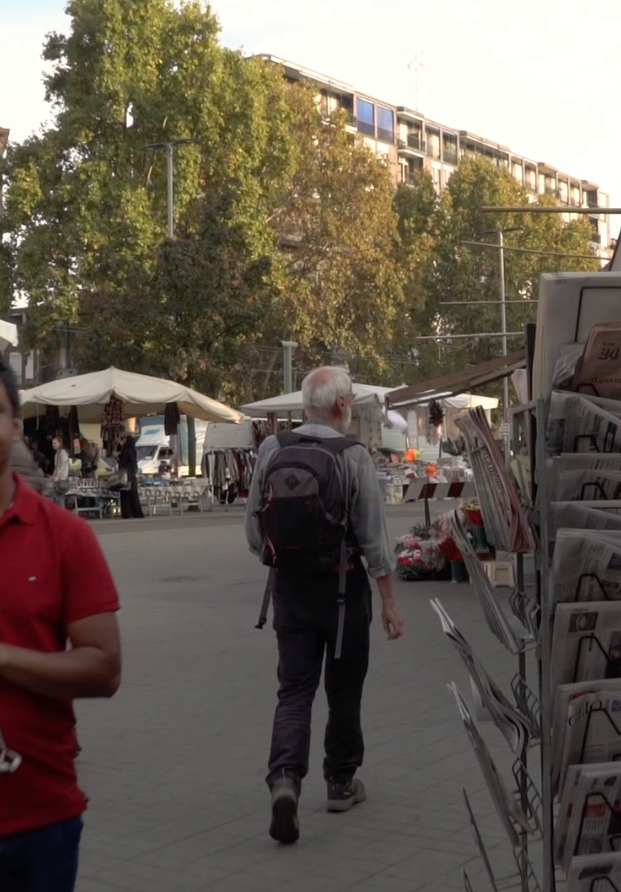 |
It reminded me of the Stalker group, those fringe urban planners who came out of Rome and inaugurated the transurbance walk. “Much like the Surrealists and Situationists, Stalker retains a certain sense of playfulness, of chance and random encounters, and has a keen interest in urban exploration. But unlike these older groups, it has moved away from the city centres to explore the outskirts.” | |
After a four-day tour of Rome, Lorenzo Romito, one of the founders of Stalker, said: “We travelled through the city’s past and future, through its forgotten memories and its unconscious future, in a territory created by the human hand but beyond its control. In this void, we are able to identify an ephemeral and subjective geography, the instantaneous suggestions of a world in continual transformation. In fact, we created a space without having planned or built it, by simply walking through it.” | |
Made up of artists, urban planners and activists, Stalker looks for itineraries and territories within and between cities, that escape known cartography and enable us to invent a new one. Just like what we were doing here. | |
That must be what Leonardo and DOM was trying to get us to experience. But what about these little fictional touches scattered here and there along the way, where were they going to take us, what other kind of territory were we in the process of inventing? | |
We came across a few walkers, a few cyclists and a few pigeons, but not many human beings or non-human beings actually inhabited the area. Suddenly, a prostitute emerged from a grove of trees and ran off, pulling her clothes back on; another new burst of fiction that got us back on track towards the landscape and reality that the artist wanted to show us. | |
I reflected on today’s urban planning, which strives to rationalise space and control it, but that considers these margins – these nooks and crannies of time and space – as meaningless because it has no real idea of who lives there. | |
Tim Ingold, a British anthropologist, encourages us to recognise a world of lines, textures, paths, skills and dwellings, where we previously saw only objects, connections, means of transport and production*. Is that what was going on here? Was it about revealing the space and all its ramifications by “working through” it, and observing the inhabitants in these margins and their relationships, so we can truly understand what is being woven outside the productive city? | |
These questions sometimes amused me, sometimes tormented me. I must have been walking for nearly five hours in a foreign city, without a break, without knowing where I was going or for how much longer, and all without speaking? | |
“Take me to the town, I want to dance with the city” thrummed the music of Editors as we exited a bend in the road, giving me a vivid feeling of the group there beside me. I became aware that it was carrying me with it, and I felt lighter and more supported. It’s no mean feat to walk on your own in silence all while being accompanied by others. Usually, when we walk in groups, the other person is a silent support through their smiles and their looks. However, they’re a source of perceptual disturbance when they speak. I remember the town planners I worked with when doing a town study with the ANPU. We’d arrived from Paris by train, where we’d talked the whole way without glancing out of the window. They’d all of them come with folding bikes, which they’d unfolded on arrival so they could explore the city in just two hours, while continuing a lively discussion with a few brief stops at notable viewpoints, before finally getting back on the train and starting to plan some major transformations for this small town which they’d sniffed at when comparing its statistics to another place of the same size. What would their plans have been like if they’d done all that in silence and at night? | |
Here, in Milan, I was keenly focused on my sensations and the landscape around me. For me, here, the other person is mainly a source of admiration – was I the only one in this state of mind? I could see a road, maybe there were buses... | |
Fortunately, the same as with every time I’d felt discouraged so far, an event, a piece of music, an apparition cheered me up. Now we’d arrived at an abbey that I took to mean we’d get a bit of a rest. Sure enough, we remained there for a few minutes, immersed in a mass with clergy reciting biblical texts into their beards without addressing us. It was a strange kind of ritual where they’d get up and sit down over and over again in front of a sparse congregation. It all felt rather surreal. | |
We set off again and a few moments later we arrived in a large field. As night fell, the human loudspeakers spread out around us, chanting a long text that captivated me and clarified some of my questions. It was a wonderful text about the nocturnal wanderings of a man, at the lowest ebb of his existence, who walks aimlessly through the city for hours on end and knows all its nooks and crannies; its violent side as well as its beauty. | "It was a wonderful text about the nocturnal wanderings of a man, at the lowest ebb of his existence, who walks aimlessly through the city for hours on end and knows all its nooks and crannies; its violent side as well as its beauty." |
So that was it, I was experiencing the wanderings of somebody at rock bottom, and the map I was following was his map! It was a very different map from the one walked by the tall, sleek individuals with their perfectly coiffured hair in the queue for Chanel in Milan city centre... | |
In a way, the path we travel is our “psychological distance”. | |
It brought to mind the notion of hodological space, a concept in urban psychoanalysis that had really interested me. Generally speaking, hodology refers to the science of network connections. In psychology, this is a term that was introduced by Kurt Lewin (1890–1947) to describe the study of networks in a person’s living space. | |
In addition to the above meanings, hodology can also be used in geography and town planning to refer to the study of paths and routes in a city. The perfect definition of a “hodological space” is an affective location where the reference points relate to a set of actions – a journey for example – rather than a plane with geometrically calculated coordinate systems (...). The connection between the “topological” relationships of situations and the dynamics of psychological and psycho-social processes means you can plot the “best routes to satisfaction”, equating to the stages of libido development in Freudian theory. | |
All this leads us down the path of psycho-geography, which was what inspired the situationists, and that the ANPU itself draws many resources from. | |
It was magical – I was experiencing psycho-geography in real life and in motion! | |
The end of the trail approached, taking us back to the city and its front end, and we crossed the border again, still following this man with his never-changing stride and who seemed to be unaffected by the passage of time, which impressed me more and more as my knee became more and more painful. On the outskirts of this city, which was as unplanned as most entrances into our cities are, we bumped into some of the figures we’d met on the back end – like the prostitute and the youthful shadows that appeared behind the trees – this time passing us in a fast-moving band to the sound of music. This particular moment had the hairs standing up on my arms. Leonardo didn’t just show us the margins, he wrote poetry with them. All the people we’d met lived here and played a part in writing it. | |
We entered the city once more. Before we knew it, we were immersed in ambiances with completely different vibes, starting with a concert in a small square (with a welcome supply of beer and pizza) and then an aquagym class in an overheated pool – another ritual, but for sports this time – that I dreamt of joining in with to soothe my aching body. | |
When we left the pool I really couldn’t take it any more; I was limping more and more, I wasn’t going to make it to the end. The cultural mediators who were accompanying the group urged me on, just a bit longer. | |
The end of the story was disconcertingly simple. The man arrived at his flat, turned on the light and closed the shutters. He’d come full circle and I now began seriously thinking of calling an ambulance or a taxi to get back to the hotel! |
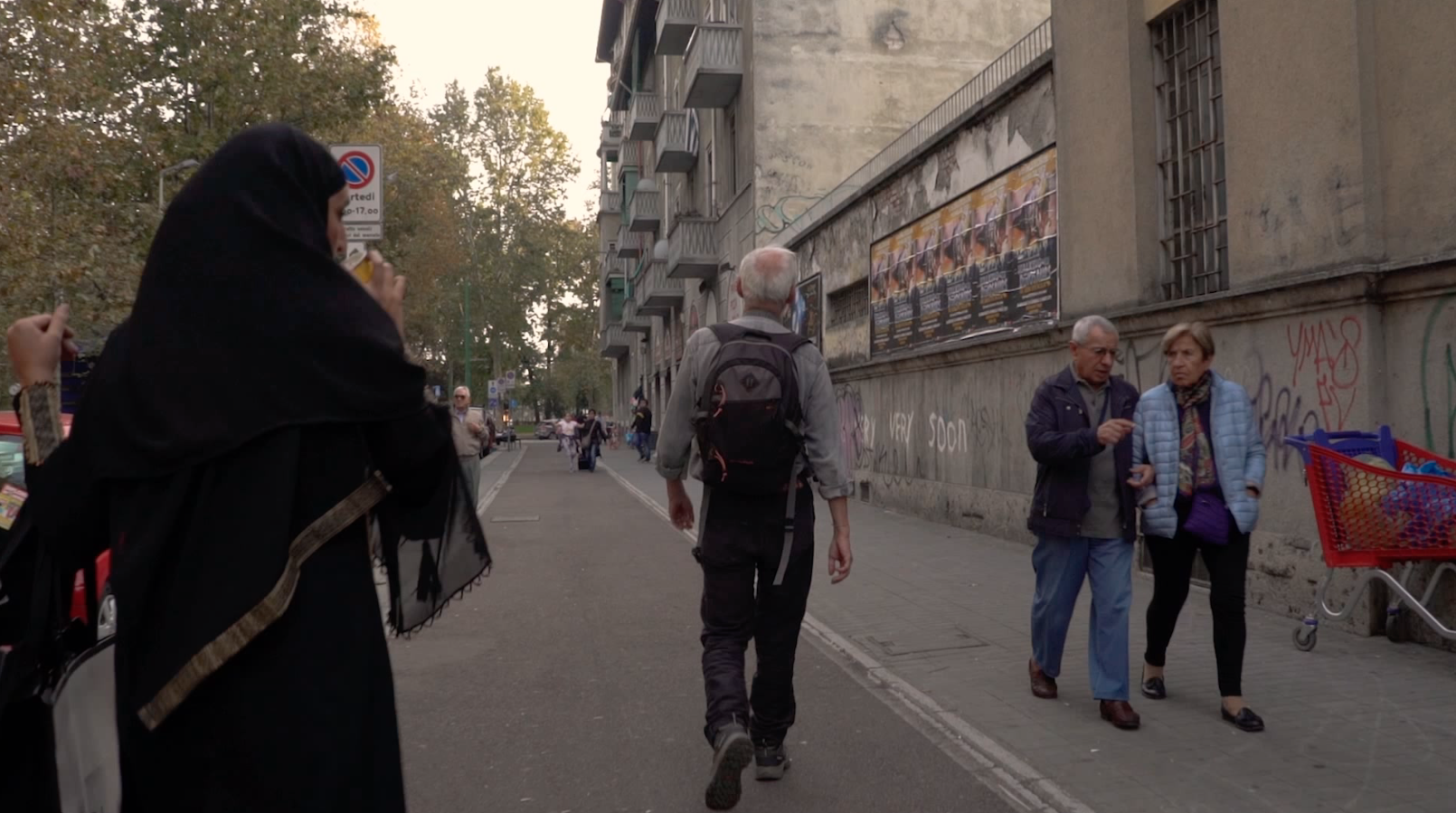 |  |
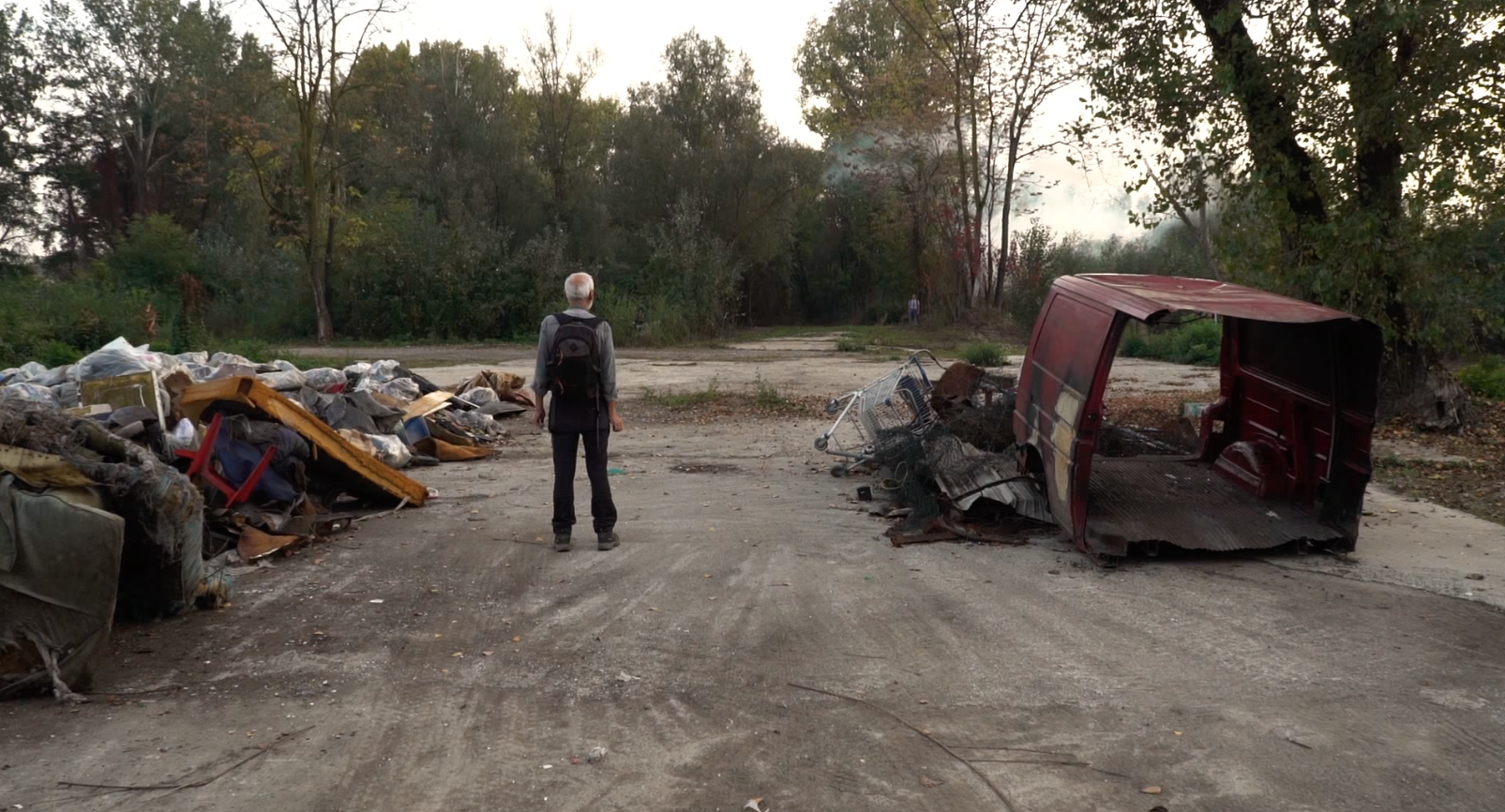 | 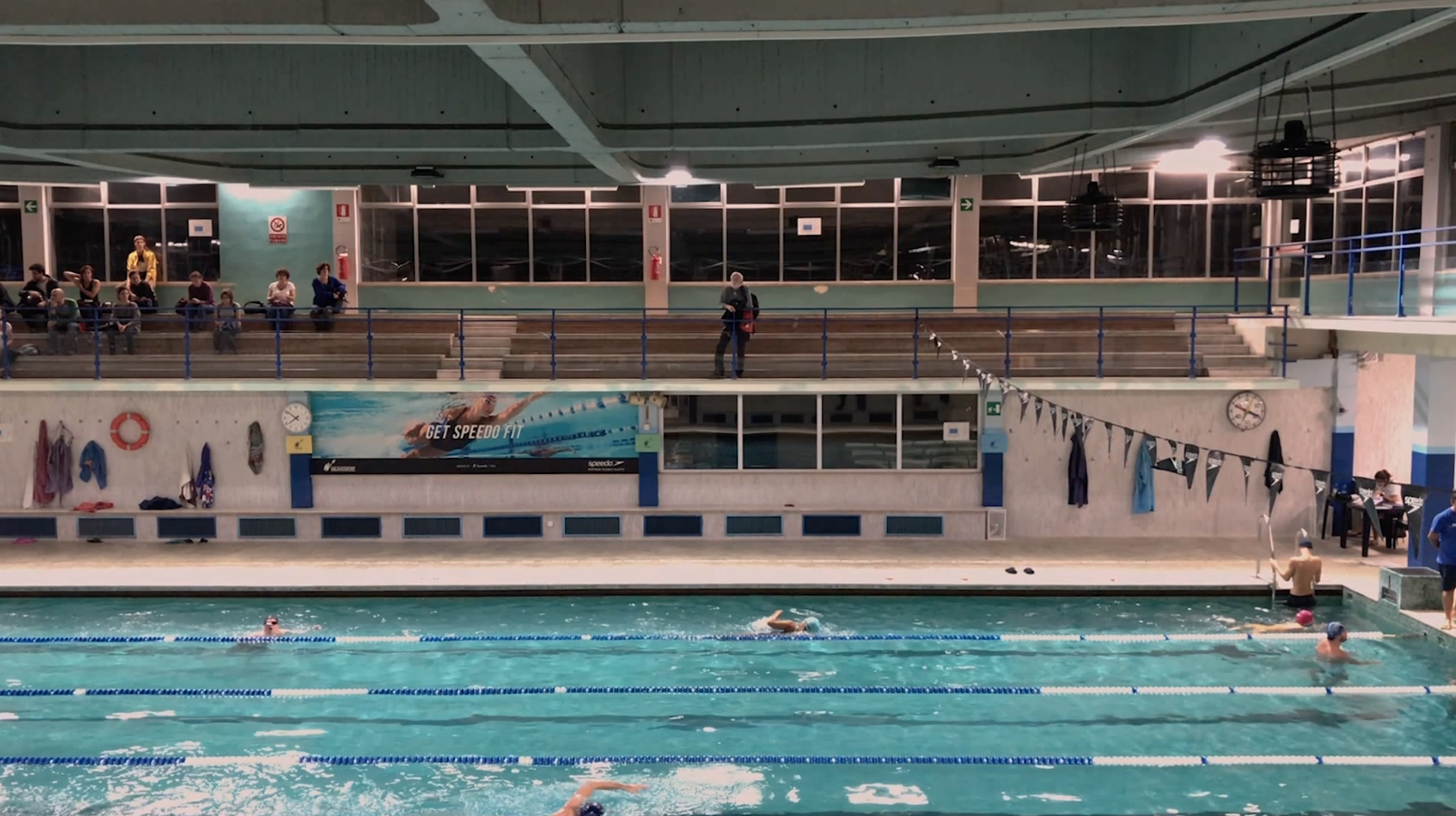 |
Several weeks have gone by since and that experience is still haunting me. Just as meditation takes us to the very depths of our being, passing through multiple layers of agitated, calm or resigned thoughts, the experience I’d had felt like it enabled me to penetrate to the depths of this city’s soul. It felt like this crossroads between reality, fiction and my subjectivity would guide me on my journey into something deeper. Like the director Constantin Stanislavski, whose teaching centred round actors’ emotional memory and personal experience, plunging them into extreme states of fatigue in order to get at the truth of their characters, I think that all actors in the urban fabric should experience this kind of performance before they build or transform a space. It would help them get to the truth of the city-being, through real engagement with their body – on the ground and in the terrain – instead of through poring over maps at their desk. Anything that intensifies perception and gets the mind off-balance, opening it up to new sensations, is likely to produce original new thoughts. And let me tell you, I had definitely experienced some sensations I had never felt before through this! Fiction should also be encouraged into the urban fabric more often. Inventing a story like this journey through Milan – which I would never have discovered from this angle if I hadn’t been offered a chance to experience this particular reading of it – helps people think about the city in a different way. As we know, cities are often built by and for working people in full possession of their financial and physical resources. Storytelling being used as a medium for taking you on a detour into the margins – with all its invisibility and mysteries – is a rich wealth of information for approaching the urban body as a whole and identifying its areas of friction as well as its beating pulse. Surprisingly, it’s not in the city centre where you feel your heart beating the most – it’s the reverse.
So, unlike George Pérec, it wasn’t a place that I exhausted, but my body, and this “radical” experience has both accelerated my knowledge of a space (I now feel like I know this city like the back of my hand after only a few hours walking around it) but has also revealed the very essence of the city. This is because I left feeling that I’d got to the heart of it, I’d seen the front and the back end of it. I’d seen its truth beyond its imperial, spectacular and deceptive appearance. Sources and bibliography: La vraie légende de Stalker, Vacarme magazine, 2004 Tim Ingold, Lines: A Brief History (2007), Sophie Renaud, Brussels, Zones Sensibles, 2011
Sources, bibliography:
La vraie légende de Stalker, revue Vacarme, 2004
Tim Ingold, Une brève histoire des lignes (2007), trad. Sophie Renaud, Bruxelles, Zones Sensibles, 2011

